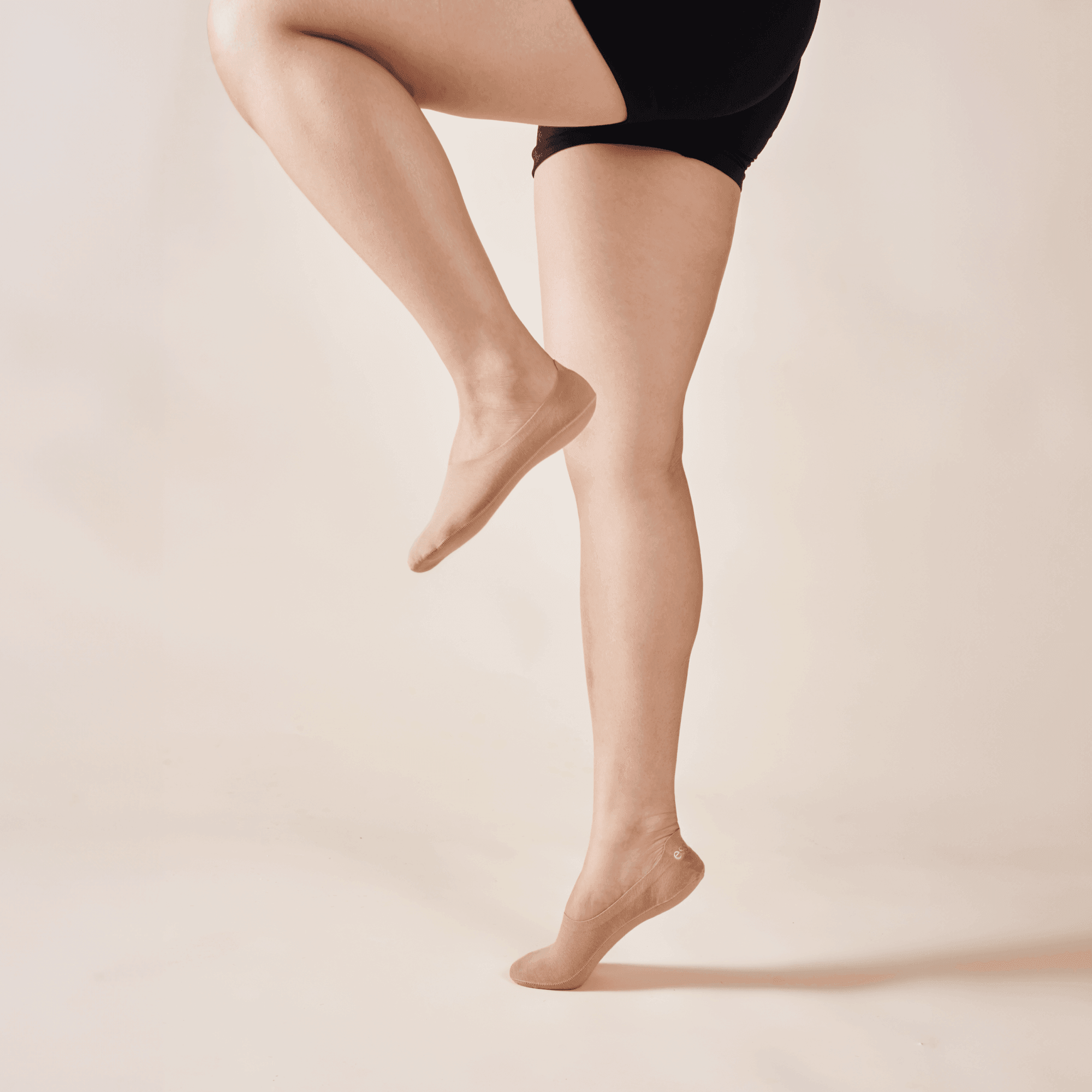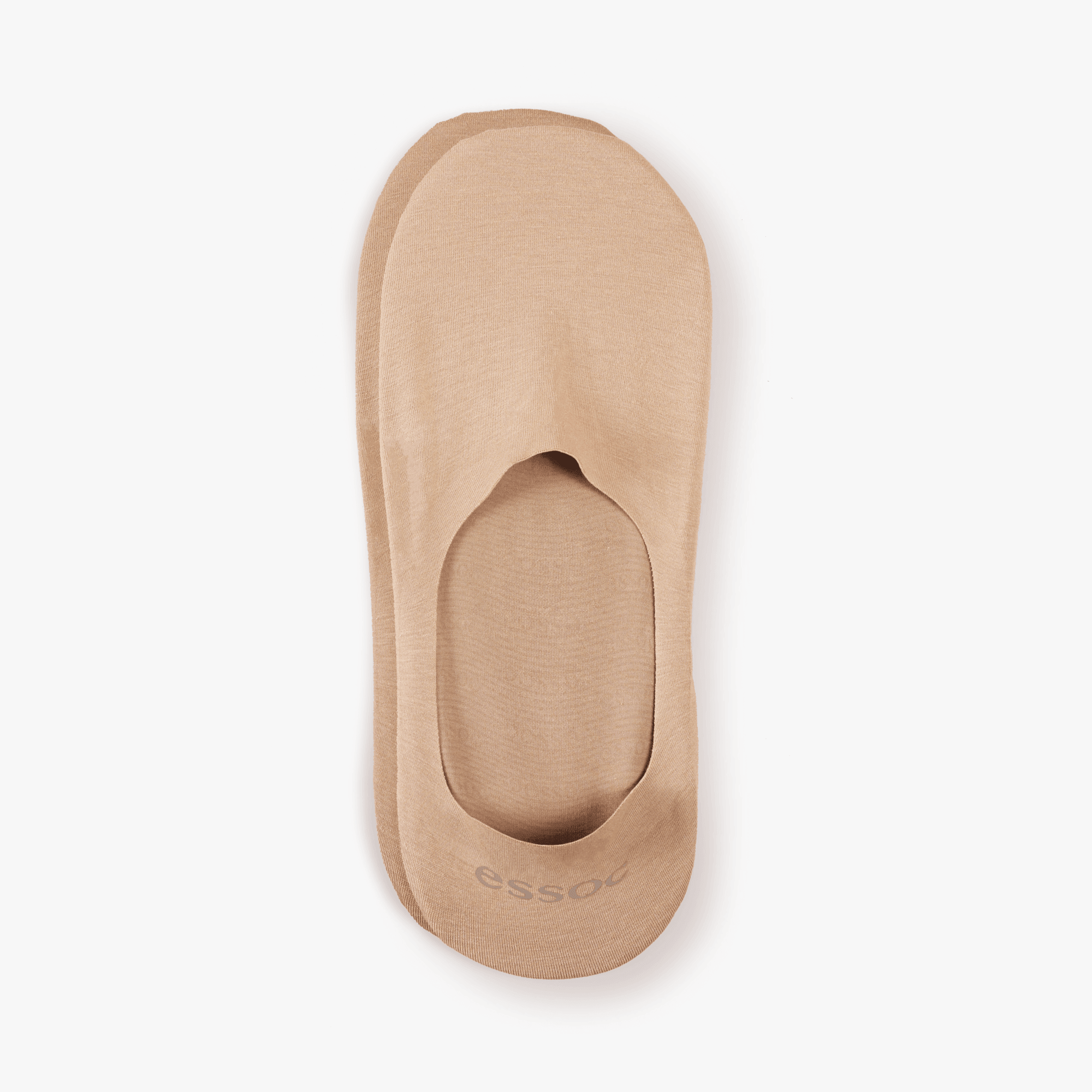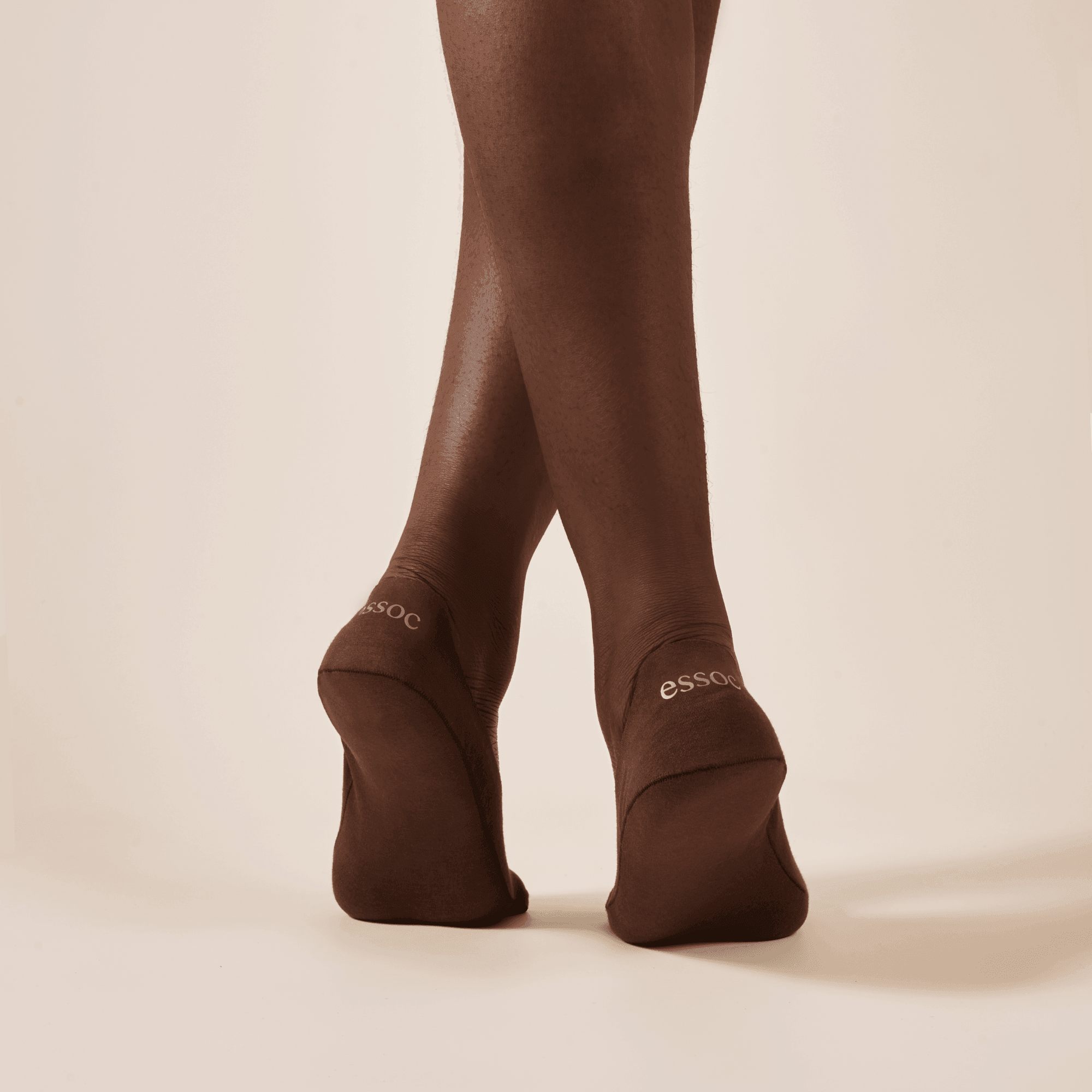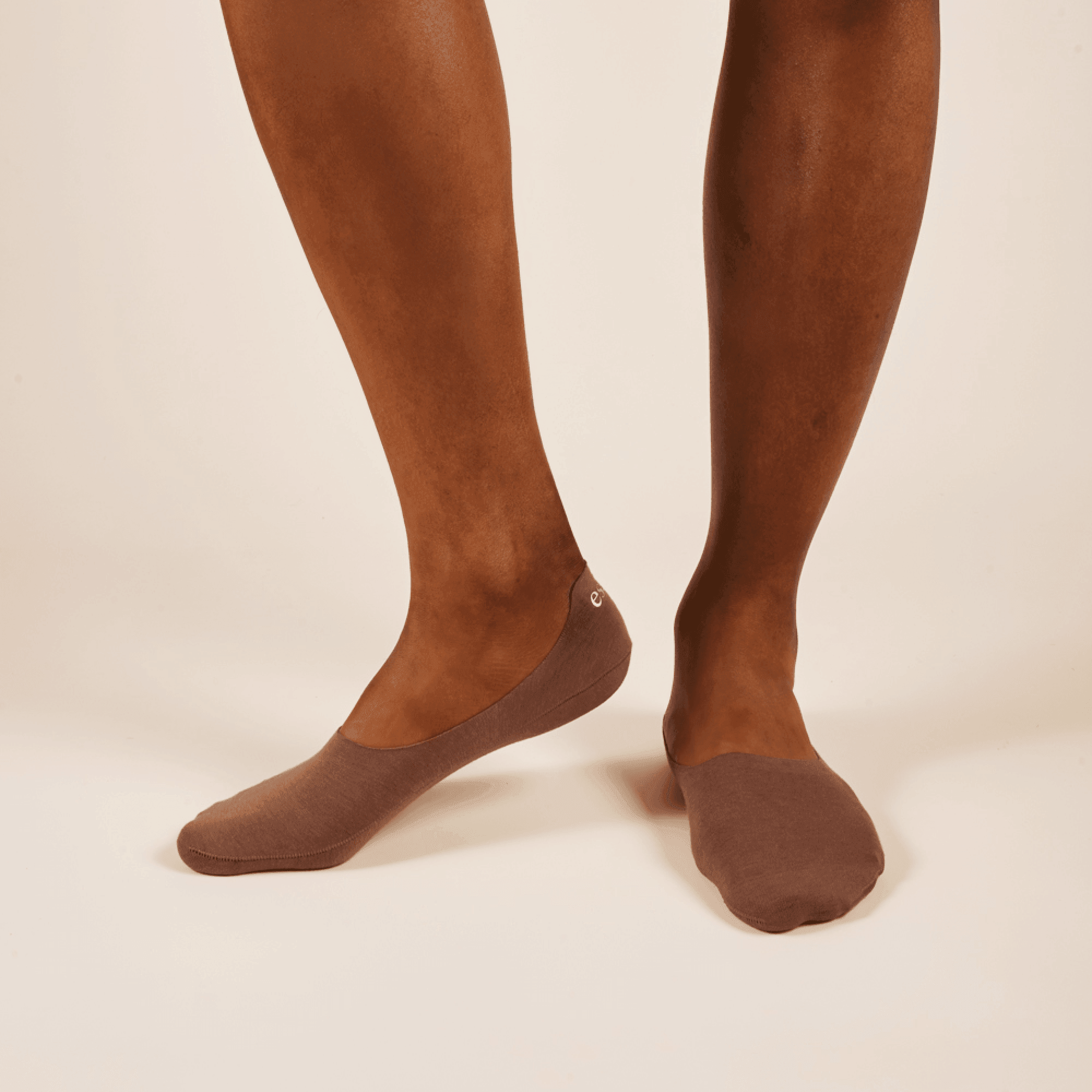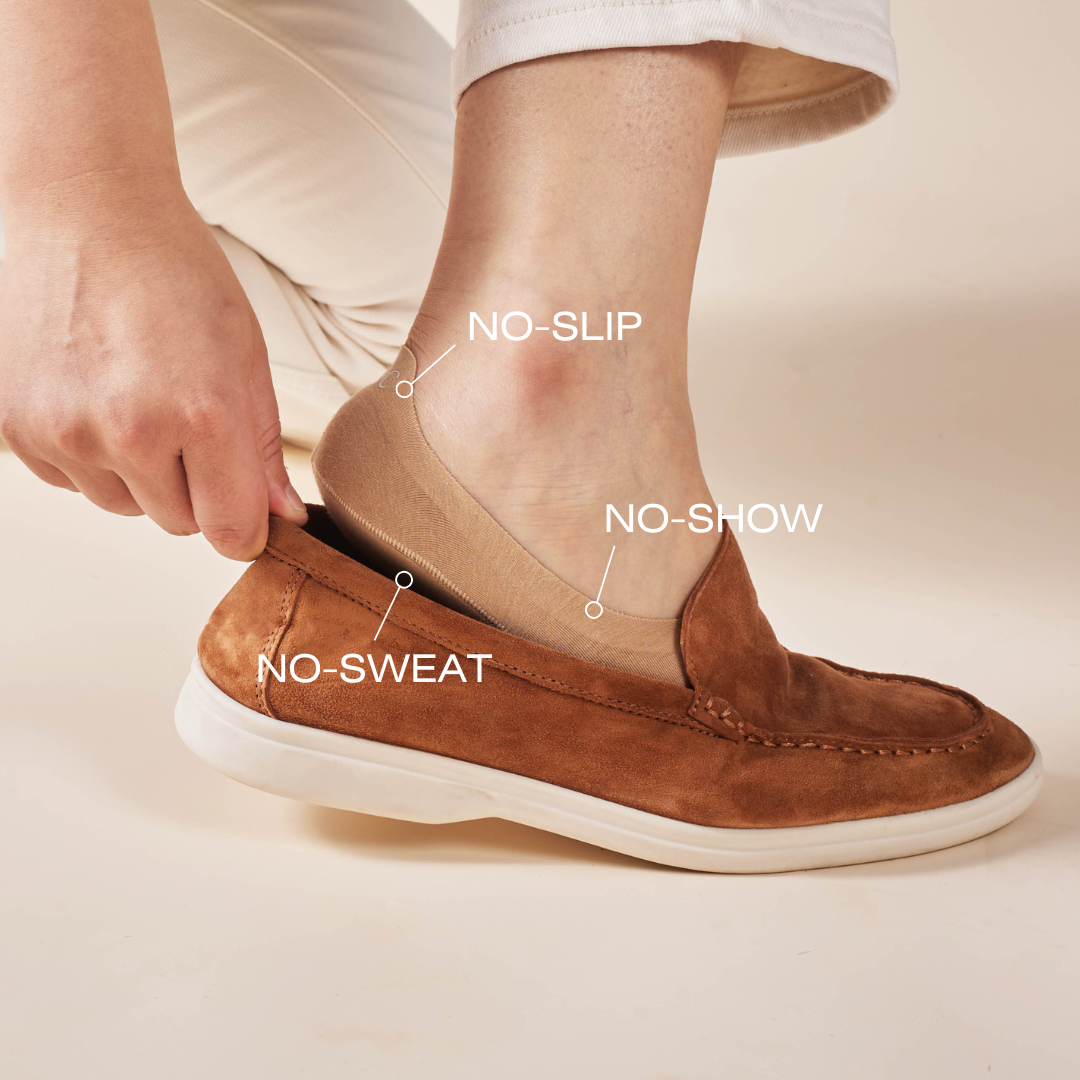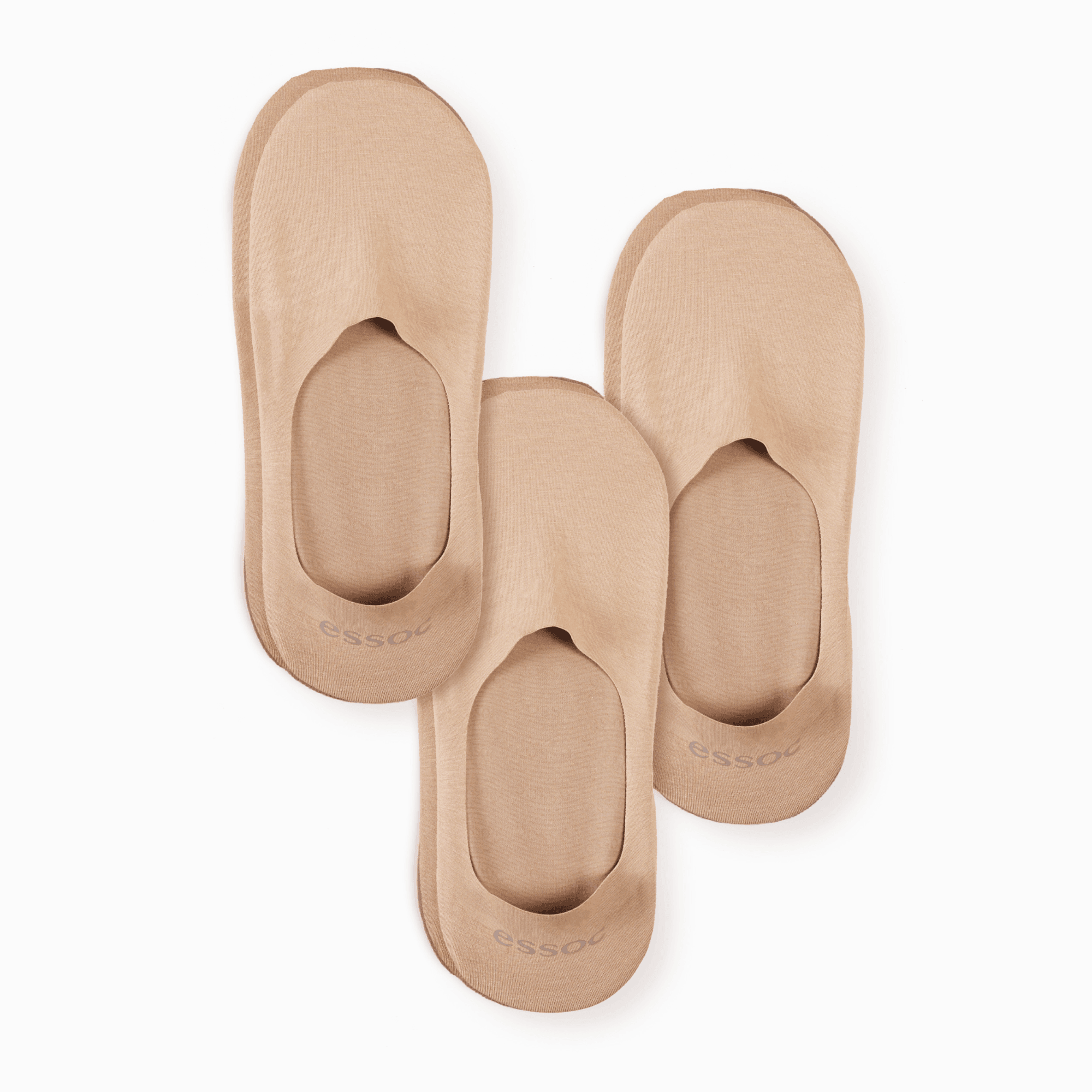No-show socks are a must for those who want comfort without visibility. But I’ve found not all of them are the same, especially in materials. Cotton offers softness but can trap moisture. Moisture-wicking fabrics keep feet dry, making them great for workouts.
Then there's eco-friendly material, which might appeal to those looking to make sustainable choices. Each fabric brings its own set of benefits, impacting breathability and durability. Choosing wisely can really enhance your experience. So, if you’re gearing up for anything from lounging to dressing up, keep these details in mind for your next pair.
Key Takeaway
- Cotton no-show socks offer softness and breathability but may lack moisture control.
- Moisture-wicking socks keep feet dry and reduce odor, ideal for active use.
- Eco-friendly materials provide sustainable options without sacrificing comfort or durability.
Cotton No-show Socks
The Appeal of Cotton
I’ve noticed something about cotton no-show socks. They just feel right when I pull them on in the morning. Soft sock material—easy on the skin—and breathable sock fabric that doesn’t trap too much heat. It's not just comfort, it's familiarity.
Cotton is a natural fiber, and that means it breathes. The fabric lets air move through, keeps sweat from getting too sticky, and helps during casual days when I’m not moving fast but still want to stay dry. I think that's why cotton no-show socks are so common. Folks like them for:
- soft touch socks feel
- hypoallergenic sock fabric
- eco-friendly socks (organic cotton or recycled blends)
The thing is, that soft comfort makes them ideal for casual no-show socks. Especially if I’m in loafers or canvas sneakers. I just don’t feel them—but they’re there. Hidden socks, but doing the job.
Limitations of Cotton
Still, I can't pretend they're perfect. Pure cotton no-show socks have some problems. I’ve worn them on hot days and ended up regretting it. Cotton's great at soaking up moisture, but not so great at letting it go.
So, my feet start out feeling dry, but by noon they’re damp, and that wetness stays. Not just uncomfortable, sometimes borderline gross. That's what happens when:
- sweat absorbing socks don’t dry fast
- breathable sock material lacks evaporation speed
Also, cotton socks tend to stretch out. Especially around the heel or the arch. After a few washes, they might sag or slip down. That stay-put feeling? It fades. Some heel tab socks I tried a while ago? They went floppy after just six weeks.
So while I love cotton’s softness, I’ve learned not to trust it for workouts or full-day walking.
Blends for Better Performance
That’s where things get interesting. Sock makers started blending in synthetics. A little bit of spandex—say 2% to 5%—makes a big difference. Stretchy no-show socks stay on better. Nylon adds durability, gives it that smooth finish too.
So you end up with:
- cotton no-show socks with sock material blend
- elastic socks that keep their shape
- structured no-show socks that hug the foot without squeezing it
The mix matters. Nylon no-show socks don’t breathe as well alone, but when it’s only 10–20% of the blend, it strengthens the whole sock. And spandex socks? Those give a snug but flexible fit. Not tight, just held together.
These blends are why performance socks feel so different. They fit more like a glove. And they don’t sag halfway through the day.
Comfort Features
And then there’s the extras. Not just the blend, but the build. Some of my favorite socks have features that seem small—but they make the difference between “wearable” and “don’t want to take them off.”
I look for:
- seamless toe socks (no bumps at the front)
- cushioned no-show socks (especially at heel and ball of foot)
- arch support socks with compression weave
- reinforced toe socks that last longer
Even thin liner socks can have these things. And I think that’s where the real comfort shows up. Invisible socks don’t have to be basic. They can support, cushion, stay dry, and not be seen. Some styles, like the ones in Essoc's Collection, get the balance right—low-profile but thoughtfully built.
Most of mine are machine washable socks. I throw them in with my t-shirts, they come out fine. Some of the better ones? They last over 30 washes without changing shape.
Moisture-wicking Socks
Why Moisture Control Matters
Now if I’m sweating—especially during a run or long walk—cotton doesn’t cut it. That’s when moisture wicking socks come in. Synthetic fibers like polyester no-show socks keep my feet dry. They don’t absorb like cotton. Instead, they move the sweat. From the skin to the outside of the sock. That’s called sweat-wicking. And it means:
- dry feet during activity
- fewer blisters
- less odor buildup
Even after 10,000 steps, I can still feel dry. That’s the power of lightweight socks made for performance.
Materials Used
Most moisture wicking socks are made from synthetic fibers. The most common is polyester. Polyester no-show socks are:
- lightweight
- fast drying
- smooth inside sneakers
Sometimes you’ll also find bamboo fiber socks. Those are a bit softer, and they help with odor too. Natural odor resistant socks. I’ve used bamboo pairs during summer hikes, and they held up.
Some of the better ones add mesh socks panels for airflow. It’s not just about removing sweat—it’s about cooling too. Breathable sock material, especially across the top of the foot, can reduce overheating.
Benefits Beyond Sweat Absorption
There’s a lot going on inside these socks. Besides moisture control, the best ones come with anti-bacterial socks tech. That keeps odor-causing bacteria from sticking around.
Great for gym no-show socks. Or running no-show socks. Anything high-use. And if you’re changing shoes during the day (office to gym to home), quick dry socks really help.
Some even have:
- anti-slip socks silicone grips
- non slip heel socks that don’t slide down
- compression no-show socks that boost blood flow
That combo? Perfect for folks who are on their feet all day. And I think these are the socks that are built for more than just being unseen.
Design Considerations
The heel matters. If a no-show sock slips under the foot, it’s basically useless. That’s why silicone grip socks are popular now. They’ve got a little patch at the heel, usually clear, sticky without being messy—Essoc’s heel grip design in particular has saved me from more mid-walk sock adjustments than I can count.
Sock heel grip keeps the back up, even when shoes rub or feet flex. I’ve had some that used to slip every hour—replaced them with ones that had grip and never looked back. Compression helps too. Not the full-leg kind, just enough around the arch. So the sock doesn’t twist or bunch up.
And there are options for:
- ultra low cut socks for flats
- no show socks for sneakers with padding
- heel tab socks that barely peek above the shoe
For me, it’s about knowing when and where I’ll wear them. For walking or running? I go synthetic. For lounging? Cotton. For workdays? Something blended.
Always pick socks that match the day, not just the shoe.
Eco-friendly Materials
Credits: The Kavalier
Growing Demand for Sustainability
I noticed more folks (myself included) are paying attention to what their socks are made of. Maybe it's the weather, or maybe it's guilt. Either way, eco-friendly socks are starting to pop up everywhere. These aren't just your grandma's cotton no-shows—though, honestly, she might've been onto something.
Sustainable sock material means stuff like:
- Organic cotton (grown without synthetic stuff)
- Recycled fibers (usually polyester or nylon)
- Bamboo fiber (comes from bamboo pulp, naturally quick to grow)
They all aim to cut waste, use fewer chemicals, and feel better against your skin. Which is nice, right? Nobody wants sweaty, scratchy socks hugging their ankles.
I've found that soft material matters, especially with no-shows that stay hidden all day. If it's itchy or doesn't breathe, it's game over.
Organic Cotton Socks
There's something easy about organic cotton. Grown without harmful pesticides or fertilizers, it's cleaner from the start.
No-shows made from organic cotton feel softer to me, and they're a decent option for sensitive skin (since they're often hypoallergenic). Essoc’s blends take it a step further, layering eco-conscious comfort with structure that actually holds up.
Now, don't get me wrong—cotton can soak up sweat, but it won't always dry fast. That said, these still offer:
- A soft touch experience
- Breathable material for everyday use
- Less irritation (no weird chemicals lingering)
They're perfect for casual wear, especially when I'm wearing loafers or just hanging out indoors. Still, I wouldn't wear 'em to run laps in the summer.
Bamboo Fiber Socks
Bamboo socks might be my favorite. Something about them just feels cool, especially in summer. The fabric comes from bamboo pulp, and it takes way less water and land to grow than cotton. Plus, it regenerates fast.
What bamboo fiber offers:
- Naturally odor resistant properties
- Sweat absorption that doesn't feel soggy
- Lightweight feel that stays soft after washes
Also, they're usually seamless at the toe, which helps prevent blisters. When I wear these with low-cut sneakers or loafers, they feel like they're barely there—but better. Only downside? They can pill or stretch out faster if you don't wash them right.
Challenges and Innovations
I'll admit it—eco-friendly socks sometimes fall short when it comes to fit or performance. That stretchy feel you get from spandex or synthetic blends? Not always there with the natural stuff.
But that's changing. Companies are blending sustainable materials with elastic or silicone grips to get a better fit. So now, you've got:
- Stretchy no-shows that still breathe
- Heel grips built in to fight slippage
- Comfortable options with a decent snap-back
Even compression and arch support come in bamboo or organic cotton mixes now. The technology keeps improving, which means you don't have to give up comfort to go green.
Practical Advice for Choosing No-Show Socks Materials
Match Material to Activity
I always think about where I'm headed before I grab socks. For active days, I need materials that fight sweat:
- Polyester blends with mesh zones
- Nylon with spandex for structure
- Quick-dry fabrics for busy days
For lounging at home, I'll pick soft materials like cotton or bamboo. And summer demands lightweight, breathable fabrics that won't roast my feet.
Look for Added Features
The little details make a huge difference:
- Silicone grips around the heel
- Seamless toes to prevent rubbing
- Strategic cushioning where I need it
- Heel grips for shoes that tend to slip
These features aren't just fancy extras—they're what keep my feet happy all day.
Care and Maintenance
Treat your socks right and they'll last longer. I wash mine in cold water and skip the dryer when possible. The heat breaks down elastic and thins the fabric faster than anything.
Good socks aren't cheap, but they're worth treating well. A little care—especially with pairs like those in Essoc's Collection—means I don't have to replace them nearly as often.
FAQ
What’s the best no show socks fabric for all-day comfort?
If you want all day comfort socks, choose soft materials. Cotton no show socks and bamboo fiber socks feel soft and cool. Polyester no show socks and spandex socks fit tight and stretch well. For sweaty feet, look for breathable sock material like mesh socks or moisture wicking socks. Soft sock material and sweat absorbing socks help your feet stay dry. Try lightweight socks or thin no show socks for hot days.
How do I choose between cotton no show socks and bamboo fiber socks?
Cotton no show socks are soft and comfy. Bamboo fiber socks are soft too, but also work as odor resistant socks. Bamboo is an eco-friendly sock and also a hypoallergenic sock fabric, so it’s great if your skin gets itchy. Bamboo is also a breathable sock material, perfect for thin no show socks or summer socks. Both are good—just pick what feels better on your feet.
Are synthetic materials like nylon no show socks or spandex socks uncomfortable?
Nope. Nylon no show socks and spandex socks can feel smooth and stretchy. They’re good for athletic no show socks like gym no show socks or running no show socks. These socks are also moisture wicking socks, so your feet won’t get too sweaty. If you want a nice mix, try a sock material blend with natural and synthetic fabrics. That gives you comfort and stretch in one.
What makes a no-show sock stay put all day?
Good no show socks won’t slip if they have the right features. Silicone grip socks, non slip heel socks, and sock heel grip help hold them in place. Stretchy no show socks and elastic socks also help. If you want even more hold, try tabbed no show socks or heel tab socks. Look for stay put socks or no show socks with arch band. These structured no show socks are made to stay up.
Conclusion
Choosing the right no-show sock materials really hinges on what I need. Cotton is soft and breathable, but it doesn’t handle moisture well. For active days, I prefer moisture-wicking socks, which keep my feet dry and odor-free. Eco-friendly options are also great; they’re sustainable without giving up comfort.
I’ve learned that paying attention to fabric blends and sock features can lead to no-show socks that feel good and work well all day long—and honestly, Essoc is one brand that gets it right, blending comfort, grip, and subtle style in every pair.



